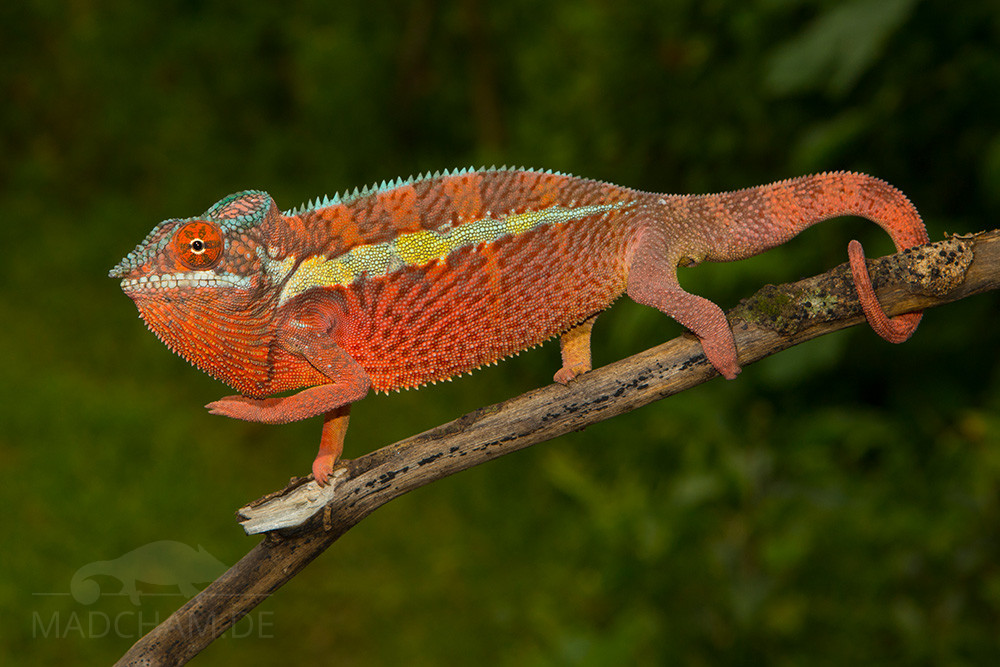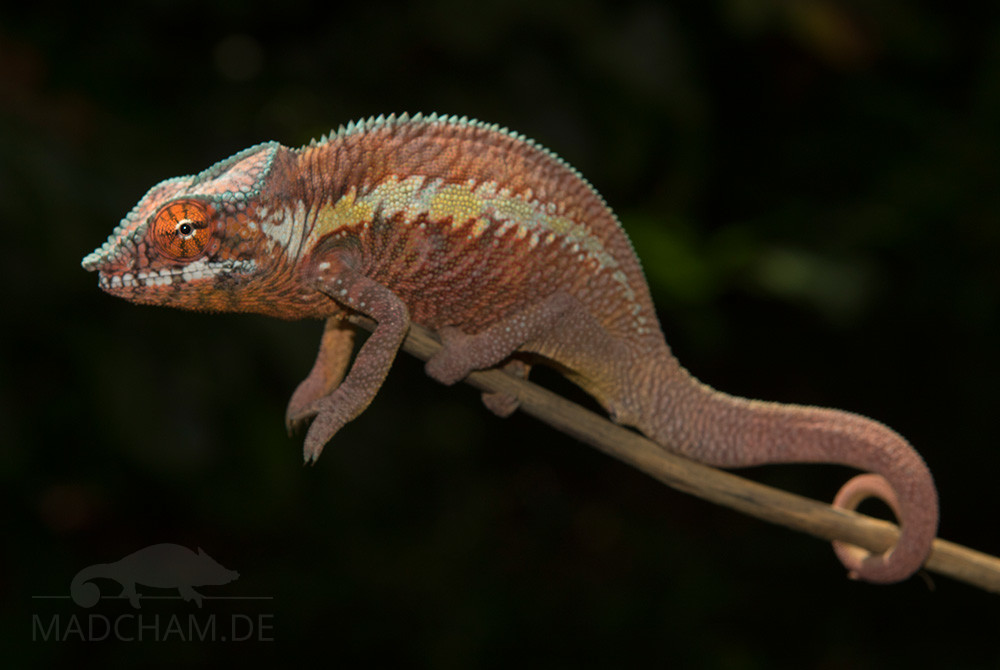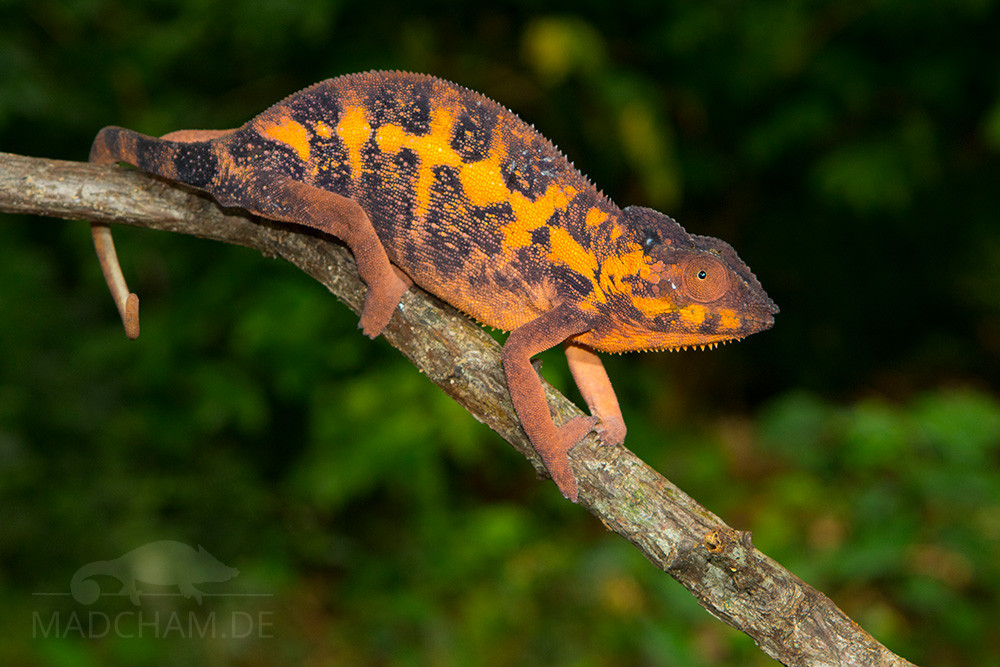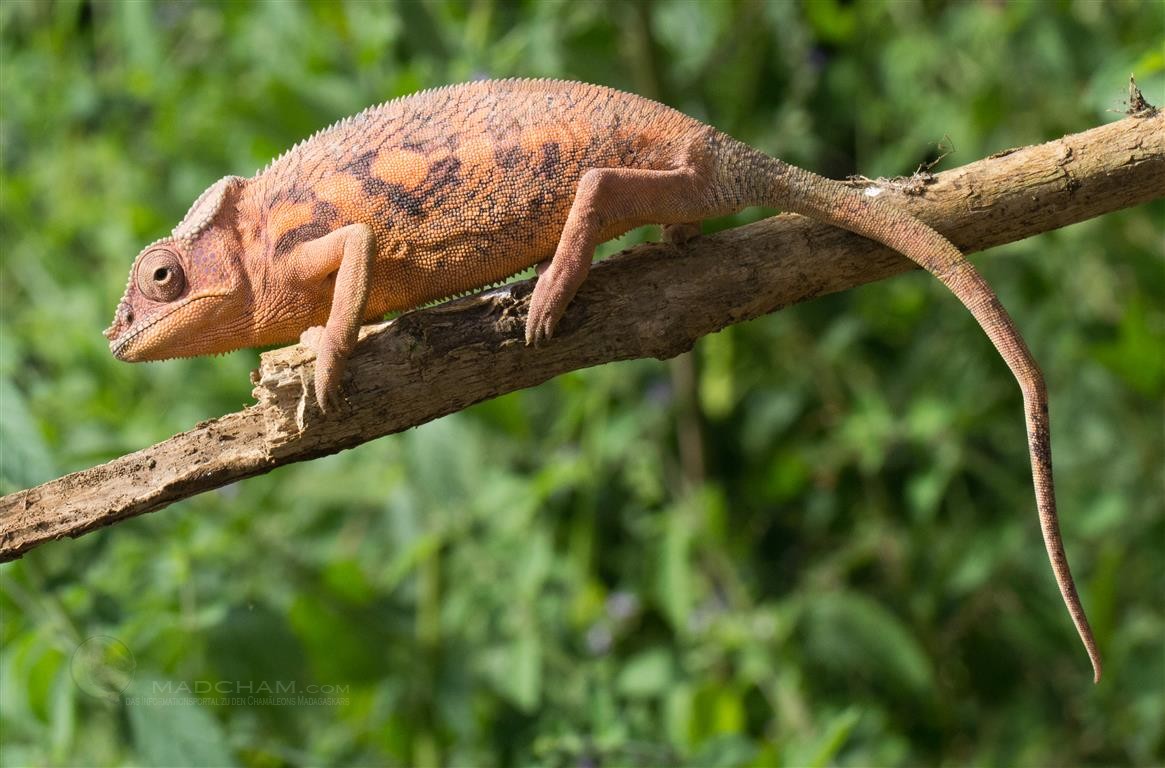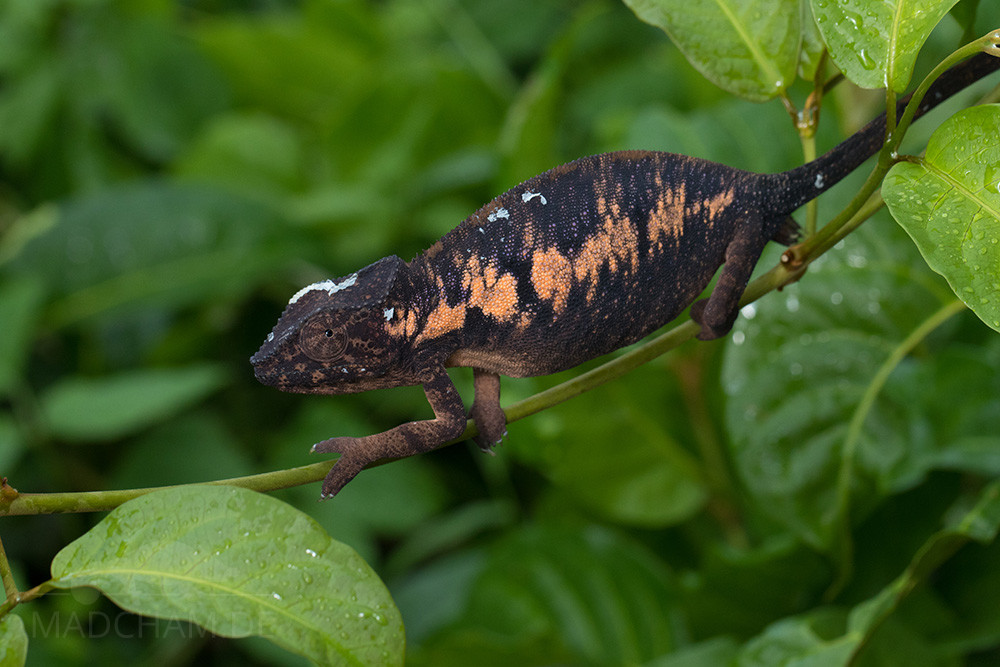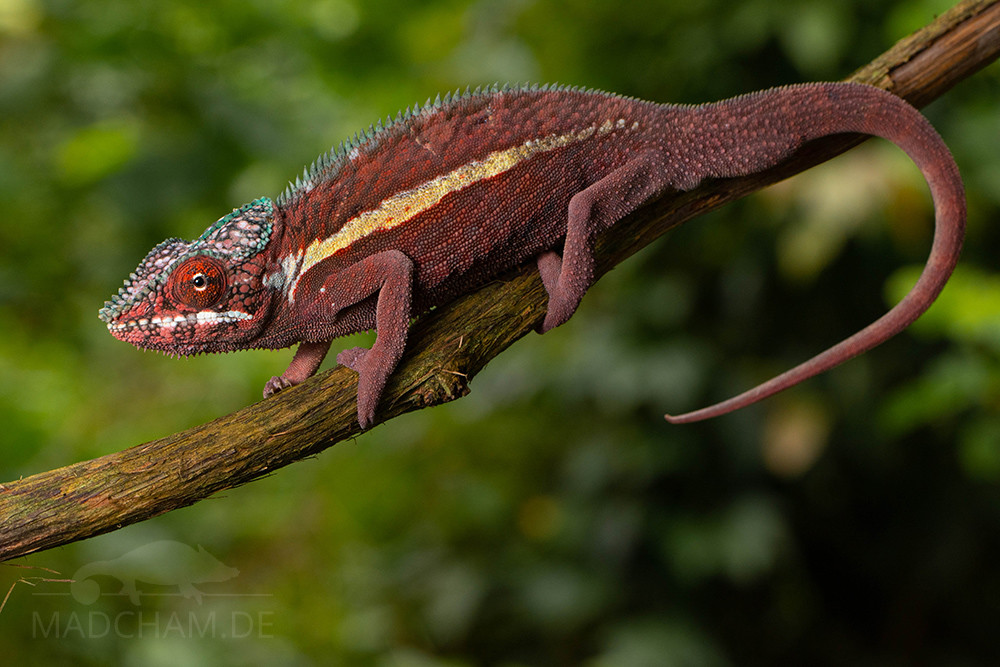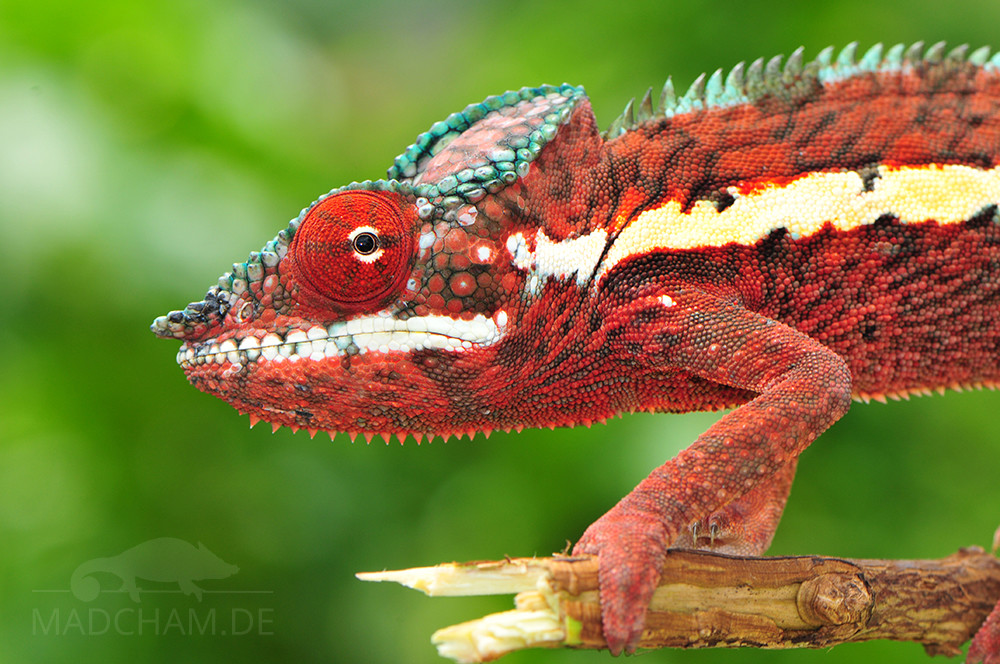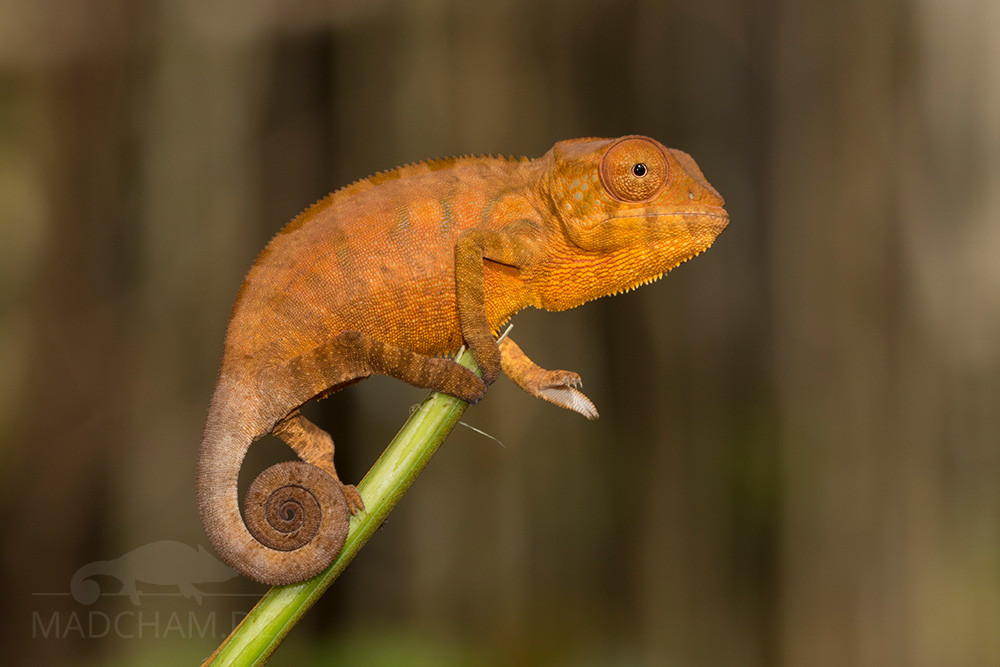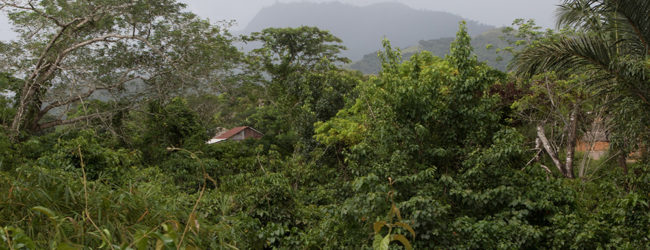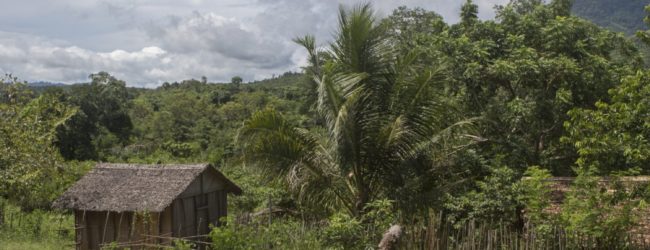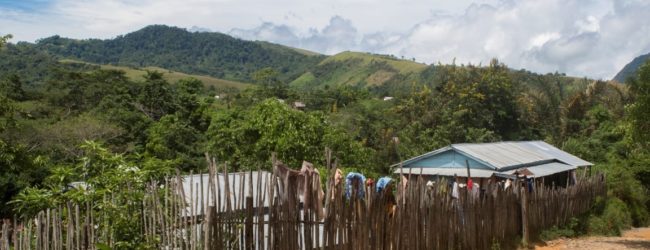Distribution of the local form Ankaramy:
The small city Ankaramibe is located in northwest Madagascar in region Mahajanga, directly at the RN6. The city partially consists of stone houses, but mainly of the usual wooden huts, and is surrounded by maize fields, secondary vegetation, and coffee plantations. Everything green outside the plantations is strongly characterized by mango trees. South of Ankaramibe, there flows the river Ankaramy which gave the name for this local form. Behind this river, the western distribution area of panther chameleons begins. In the northern direction, the local form is bordered by local form Djangoa – the males here look completely different! Between Ankaramibe and Djangoa flow two rivers called Antranofotaka and Ankingameloka.
Appearance of the local form:
The specimens occurring in and around Ankaramibe have a very special color that does not exist anywhere else in Madagascar. The males here are all dirty red, sometimes changing to a kind of pink, with bright white lips and white lateral stripes. Due to the partially pink-alike color, animals of this local form have been sometimes called “pink panther”. The following pictures show juveniles of this local form.
Weight table

Gewicht = weight in grams, Kopf-Rumpf-Länge = snout-vent-length in cm, Weibchen = females, Männchen = males
Since 2015 we have been measuring the weights of chameleons we have found in Madagascar, as far as the animals (and our scales) are concerned. In the long term, an average weight in relation to head-torso length (measured from the tip of the nose to the cloaca) for each species should be readable from as many measurements as possible. It is important to know that all weights were measured towards the end of the rainy season (= best food supply), so they are probably maximum weights in Madagascar. Triangular symbols in females do not mean pregnant, round symbols mean pregnant. In the case of Furcifer pardalis, contrary to our original assumption, there have been no serious differences in the ratio of SVL to the weight of the individual local forms.
| Jan | Feb | Mar | Apr | May | Jun | Jul | Aug | Sep | Oct | Nov | Dec | |
| Average temperature | 26 | 26 | 26 | 26 | 25 | 24 | 23 | 23 | 24 | 25 | 26 | 26 |
| Minimum temperature | 22 | 22 | 22 | 22 | 20 | 18 | 18 | 18 | 19 | 20 | 21 | 22 |
| Maximum temperature | 30 | 30 | 31 | 31 | 30 | 29 | 29 | 29 | 30 | 31 | 31 | 30 |
| Rain days | 29 | 26 | 24 | 15 | 8 | 7 | 7 | 8 | 7 | 10 | 18 | 25 |
We have collected the data given above over several years with thermometers and hygrometers at the finding places of the chameleons. "Average temperature" means that values of a whole month have been calculated to one average value per month. For example all measured minimum temperature values of February have been calculated to one average minimum temperature for February. In plain language, this means single peak values of a day may be a little higher or lower than the average minimum and maximum temperatures. It is possible that a location has an average maximum temperature of 29°C, but one day during that month it had 33°C or even 35°C there.
Ankaramibe has warm temperatures around 25°C all year long. In sunny places, temperatures may rise above 30°C. At night, temperatures drop to 20°C, during dry season they may even fall slightly below to 18°C.
During rainy season, it rains daily and a lot, so humidity raises quickly. But the region remains green even during dry season. It may rain a lot less, but precipitaion is still regular. Additionally, the location between rivers cares for a steady water supply of trees and other plants.

We have measured UVB data with a Solarmeter 6.5 in spring (beginning of April) at the peak of activity of chameleons in Madagascar. We always measured the values that a chameleon could maximally reach in its habitat.
Habitat:
Ankaramibe is embedded in a hilly landscape that looks very green but almost completely consists of secondary vegetation. Some of the hills are covered by small young forests with many Ravenalas. The panther chameleons here adapt well to the new environmental conditions and live inside the village between wooden huts and bushes, in mango trees and along small plantations. But please don’t think of Ankaramibe as a “village” like those in Europe. Finally, it’s some old stone houses and lots of ramshackle huts that stay in the middle of a lush green landscape. Everywhere grow bushes and shrubs, enough place for panther chameleons to live.

